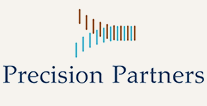In the nonprofit sector, there’s a widespread belief that a powerful Constituent Relationship Management (CRM) system will automatically elevate fundraising outcomes.
The idea goes like this: “Get the right CRM, and the donations will follow.”
Unfortunately, this view overlooks a critical truth: No technology—no matter how advanced—can replace the need for a clear strategy, human connection, and ongoing effort in fundraising.
It’s time to dismantle some of the most common CRM myths and set a new course for fundraising success that centers around planning and strategic use of technology.
Common Misconceptions About CRMs in Fundraising
Misconception #1: A CRM is the magic solution to fundraising problems.
Many organizations think acquiring a new CRM system will automatically solve their fundraising challenges. While CRMs are powerful tools, they are only as effective as the strategy that complements them.
A CRM streamlines processes, stores valuable data, and automates specific tasks—but it can’t decide who your donors are or how much they’ll give. Understanding the nuances of your donor base comes from human interaction and a strategic fundraising strategy.
In other words, a CRM supports your efforts, but the heart of fundraising still lies in the connections you cultivate and the meaningful conversations you have with potential supporters.
A CRM should be viewed as a supporting tool, not a magical fix. Use it to enable better execution of your pre-defined fundraising strategy, not replace the need for one. For example, track interactions, identify patterns, and provide insights.
Misconception #2: More data equals better fundraising.
Data is undoubtedly crucial in modern fundraising, but gathering vast amounts without a clear plan for analysis and action is a waste of resources. Consider data a collection of raw materials—data is only valuable if you know how to use it.
In fundraising, data is most impactful when it’s aligned with clear goals and an understanding of your donor base. For example, predictive analytics help you target high-potential donors, while automation frees up time for deeper engagement. Whereas regularly measuring and refining your approach warrants you’re making data-driven decisions that improve donor relationships and campaign outcomes.
Simply having more data doesn’t automatically lead to better insights or more donations.
What truly matters is the data quality and how you use it to empower deeper relationships with your supporters. The key is not just accumulating information but using that information to tailor your outreach and engagement. Move beyond generic communications to create tailored experiences that resonate with supporters—using data to segment donors, identify patterns, and personalize outreach.
Misconception #3: Predictive analytics highlights exactly who will donate.
Predictive analytics and wealth screening tools can provide valuable insights, but they do not hold the power to forecast donor behavior with perfect accuracy. The reality is that human decisions—especially charitable giving—are influenced by various unpredictable factors.
A major donor may choose not to give, while a minor donor might become a regular supporter based on a personal connection to your cause. For example, a passionate and regular supporter develops a personal connection to your cause. This connection stems from their experiences or values, and personal engagement like a handwritten note or meaningful conversation that deepens their commitment.
Ultimately, fundraising success relies on building relationships with all donors, as smaller contributors can grow into major supporters through meaningful, personalized interactions.
Data-driven tools help identify potential donors but should not be relied upon as the sole basis for decisions. There’s no substitute for human connection and a deep understanding of your community.
Technology as an Enabler: A More Strategic Approach
If technology alone won’t lead to fundraising success, what does?
It starts with a well-thought-out strategy. Here’s how you can leverage your CRM effectively:
- Start with Strategy
Before implementing any CRM or technology solution, ask yourself:
- What are our fundraising goals?
- How do we define success?
- What’s our donor engagement process?
- What metrics will tell us whether we’re on track?
Having a clear strategy should always come before selecting and implementing technology. Your CRM is there to support this strategy, not create it.
- Use Technology to Enhance Your Processes
Once you have a strategy, look at your CRM as a tool to improve the efficiency and effectiveness of your existing fundraising workflows. Here’s how:
- Streamline workflows: Your CRM should make tracking and nurturing relationships easier and not more complicated.
- Stay organized: Manage donor data, track communications, and schedule follow-ups.
- Analyze and inform: Use the CRM’s analytics tools to inform your strategy, not replace it.
The CRM should act as an enabler of your process, allowing you to focus on high-impact activities rather than getting bogged down in administrative tasks.
Creating an Effective Technology Plan
To maximize the value of your CRM, you need to create a plan that aligns technology with your goals and processes.
- Define Your Needs First
- What are the specific fundraising challenges you’re facing?
- Which processes can be improved with technology?
- What do you hope to achieve by using a CRM?
- Map the Donor Journey
- Identify key touchpoints where your donors interact with your organization.
- Determine how donors prefer to engage (email, phone, events, etc.).
- Create engagement strategies and measurement metrics for each stage of the donor journey.
- Implement with Purpose
- Begin with core CRM functions that will provide the most immediate value.
- Train your staff thoroughly on the new system to ensure smooth adoption.
- Build complexity over time—start simple and scale up as needed.
- Regularly assess the effectiveness of your CRM and adjust your approach as necessary.
The Human Element: Fundraising is About Relationships
While technology plays a pivotal role in enhancing your fundraising efforts, the human element truly drives donations. Technology should support, not replace, the essential relationships that make fundraising successful.
Your CRM can enhance the human elements of fundraising by:
- reminding you of essential donor details;
- tracking past interactions and preferences;
- scheduling follow-ups to maintain engagement; and
- identifying trends or opportunities for deeper connections.
However, your fundraising team must be the ones to:
- build authentic relationships;
- share compelling, emotionally resonant stories about your cause;
- make personal, meaningful asks; and
- demonstrate appreciation and acknowledge donor impact.
Ultimately, it’s not the technology that builds trust with donors—it’s the conversations, the shared vision, and the genuine care your team offers.
Moving Forward: A New Mindset for CRM Success
Rather than asking, “Which CRM will raise the most money for us?” consider these questions:
- How can technology better support our fundraising strategy?
- What processes can we streamline or improve with a CRM?
- How can we use data to make smarter, more informed decisions?
- Where can automation free up our time for relationship-building activities?
Technology, particularly CRMs, is an incredibly valuable tool when used correctly. However, it’s important to remember that it’s just that—a tool. The real work of fundraising lies in strategy, relationship-building, and executing a plan that aligns your team’s efforts with the needs and interests of your donors.
A successful fundraising program integrates the human element with the right technology. The most effective organizations use CRMs not as a substitute for good strategy or authentic relationships but as powerful enablers that help them work smarter, not harder.
At the end of the day, it’s not the CRM that will raise money—it’s your ability to engage with your supporters in a meaningful and personalized way that engage.

